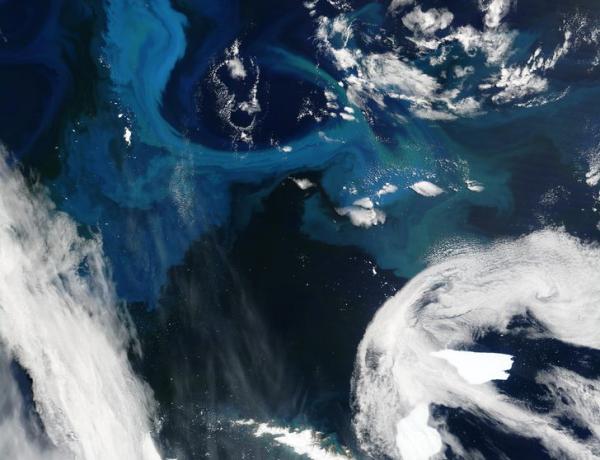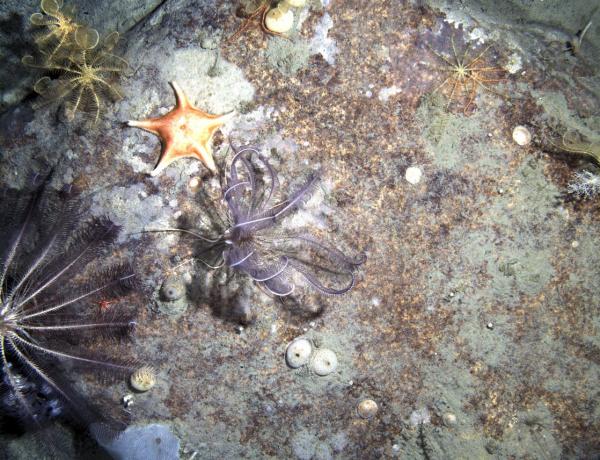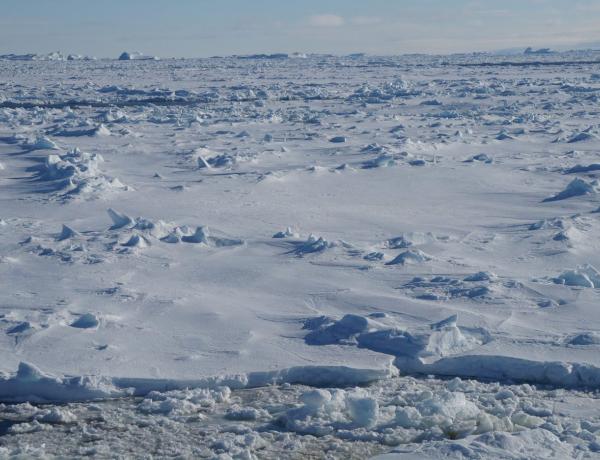The UK Polar Overseas Territories comprise two geographically and environmentally distinct territories: (1) South Georgia and the South Sandwich Islands (SGSSI), and (2) the British Antarctic Territory (BAT).
SGSSI are an archipelago of sub-Antarctic islands that form part of the Scotia Arc, a predominantly submarine ridge which extends from the Terra del Fuego region of South America to the Antarctic Peninsula.
BAT comprises of the sector of Antarctica between 20°W and 80°W forming a wedge shape that extends from the Geographic South Pole to 60°S. This region includes the South Shetland Islands and the remote South Orkney Islands at its most northerly extent.
The polar region is rapidly changing as a result of inter-related climate-driven changes to the environment including temperature, ice, and ocean chemistry. The key driver of environmental change in the region is warming sea-surface temperatures. Between 2005 and 2017, 45-62% of global ocean heat gain took place in waters south of 30°S. The Southern Ocean is disproportionately important in the increase in ocean heat content, with sea surface temperatures at South Georgia and across the BAT amongst the fastest warming in the Southern Hemisphere.
The waters of the Southern Ocean are relatively cold so have relatively high levels of dissolved oxygen. Models project an outgassing of oxygen from the ocean, with the Southern Ocean exhibiting the largest outgassing as oxygen solubility decreases. The cold water of the Southern Ocean also make it among the most vulnerable to ocean acidification due to the increased solubility of CO₂ at lower temperatures.
The West Antarctic Ice Sheet (WAIS) is one of the world’s most vulnerable ice sheets. Both its size and the rate of ice loss will have significant implications for global sea-level rise.
These changes have a range of direct and indirect effects on the marine ecosystems of the region and widespread ramifications for the planet. In turn these changes affect ecosystem services such as blue carbon pathways, fisheries, and tourism.
From an initial long list of impacts on biodiversity and society for this region, three priority climate change issues were identified by a regional working group of scientific experts and policymakers:
The South Orkney Islands in the BAT became the site of the world’s first Antarctic marine protected area (MPA) in 2010 and the economic exclusive zone of South Georgia and the South Sandwich Islands was designated one of the world’s largest MPAs in 2012, with further enhancements made in 2013 and 2019. CCAMLR Members have also developed proposals for MPAs in different regions of the Southern Ocean as part of a representative network of MPAs across the Southern Ocean. A representative network of protection measures can help enhance connectivity between populations which is one way to increase/maintain resilience to climate change (e.g., through protecting sink and source populations and transport pathways).
Ecosystem-based fishery management through sustainable use MPAs, quota systems on target species, the presence of fisheries observers and multilateral agreement on limiting impact on vulnerable marine ecosystems all help to ensure marine resources are managed sustainably and are resilient to future climate change.
Understanding change in polar ecosystems and the service they provide (from local scale fisheries through to global climate regulation) requires long-term sampling programs to be maintained and a better understanding of the links between physical change and ecological processes.
To achieve this will require an international coordination of effort to work as part of integrated work programs (e.g., the Southern Ocean Observing System) to obtain standardized datasets and provide improved data coverage. Innovations in technology such as autonomous vehicles, remote monitoring stations and the utilisation of improvements in satellite remote sensing will increase our ability to sample inaccessible regions and provide long term time series data with improved spatial-temporal coverage. In turn, this data should greatly enhance our ability to model past, present and future change in this region.
Conservation of mature undamaged habitats and ecosystems is more effective than restoration and remediation. Spatial protection in the Antarctic represents a globally important opportunity to protect unique and diverse ecosystems which provide global important ecosystem services. With the development of new, or management of pre-existing MPAs, it is important that they are future proofed to ensure a connected, representative network of MPAs. This will require consensus between nations including the establishment of protection in areas beyond national jurisdiction.
Please cite this information as Hogg, O.T., Cavanagh, R.D., Grant, S., Belchier, M., Gregory, S., and Collins, M.A., Eds. Howes, E.L. and Buckley, P. (2021) Summary - key climate change effects on the coastal and marine environment around the Polar UK Overseas Territories. MCCIP Science Report Card 2021.
MCCIP wishes to acknowledge the contributions of Chris Darby (Centre for Environment, Fisheries and Aquaculture Sciences), David Barnes, Eugene Murphy, Phil Trathan, Simon Moreley and Richard Phillips (British Antarctic Survey, NERC), Sian Henley (Edinburgh University).


